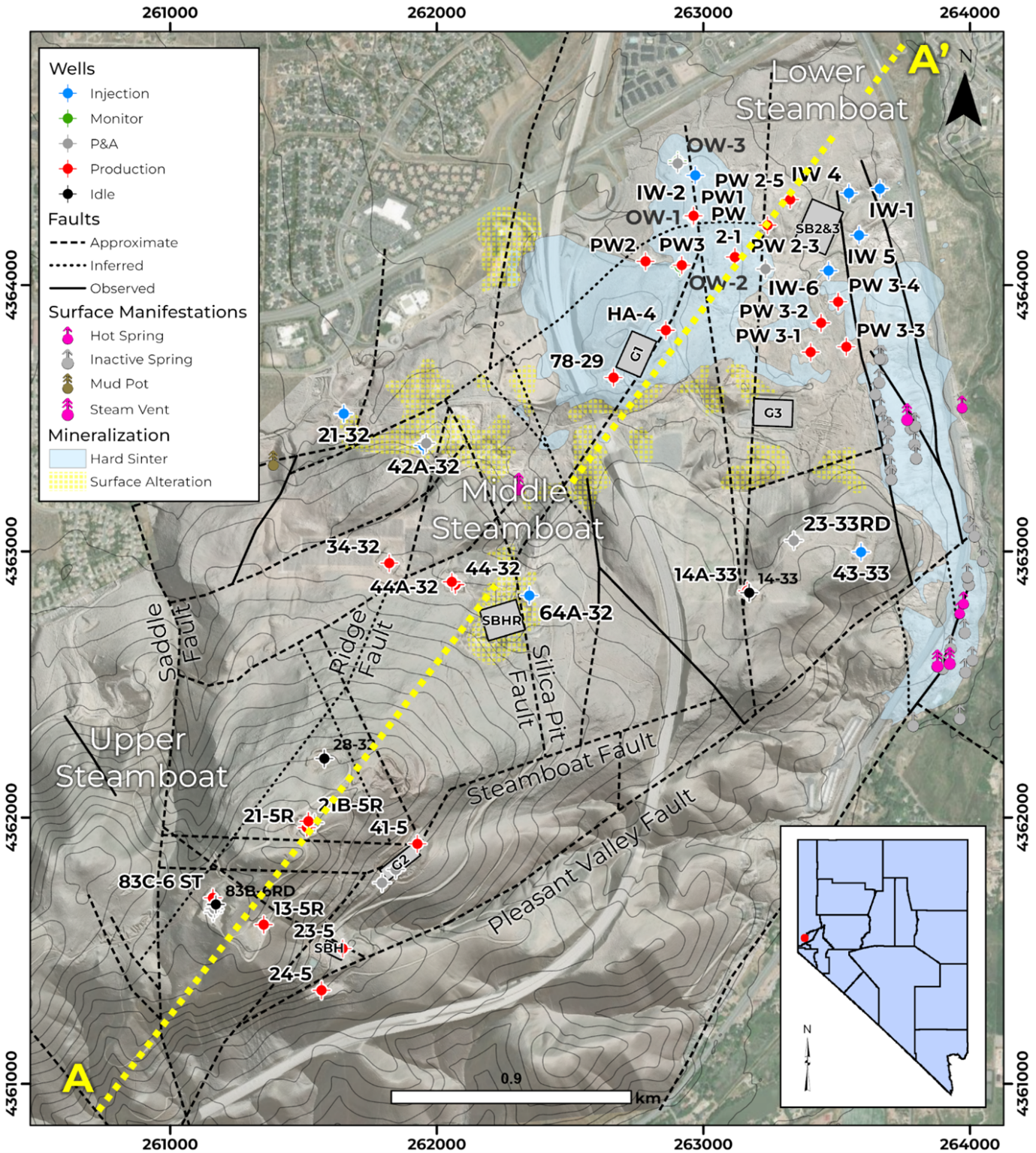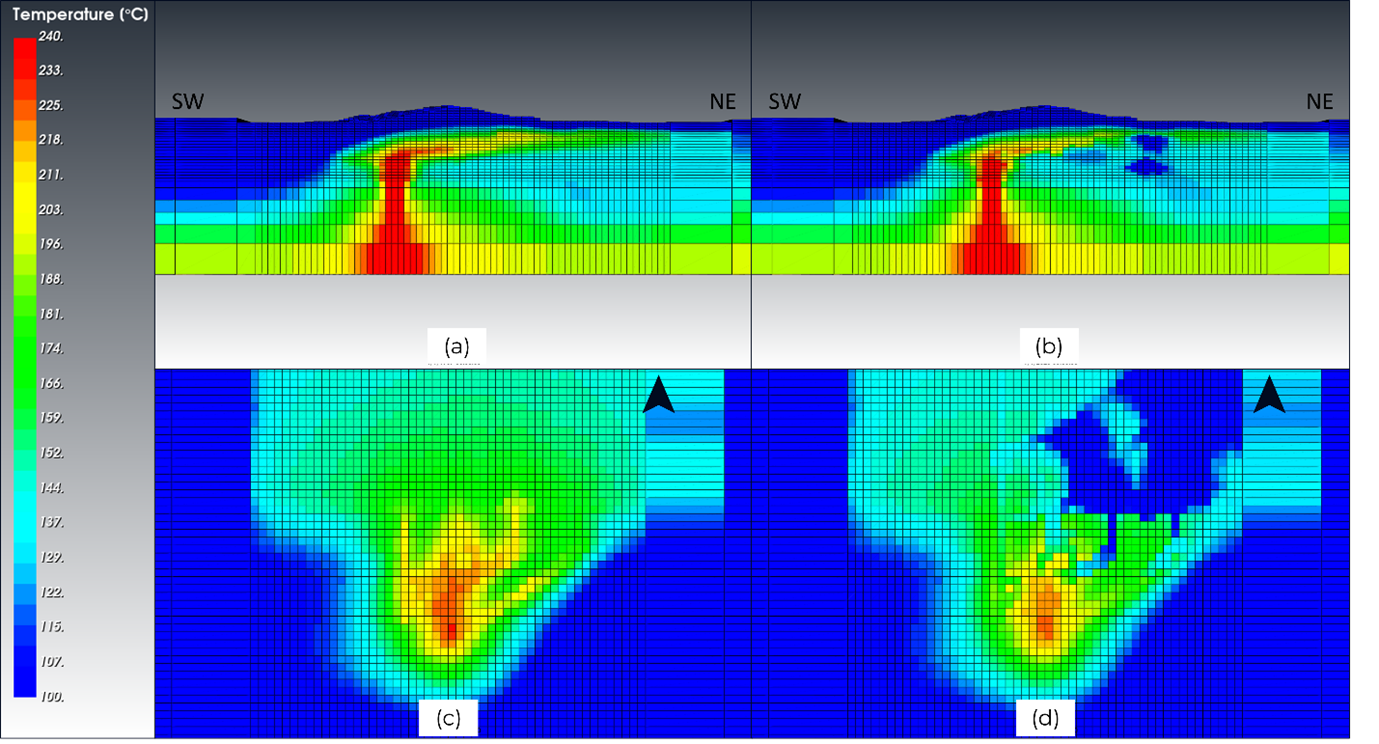Geothermal at Steamboat: 40 years on
Ormat Technologies is a leader in geothermal energy. This case study highlights the practical application of numerical modelling to optimise the development and operational strategy of the Steamboat geothermal reservoir in Reno, Nevada. It is based on the Stanford Geothermal Workshop paper “Forty Years of Production from the Steamboat Geothermal Field: Numerical Model Update” by Sulav Dhakal, Drew Spake, Lu Lee, Danny Feucht, John Murphy, John Akerley, Adam Johnson, Ryan Libbey, and Paul Spielman.
Structural and thermal hurdles
The Steamboat geothermal field, a Great Basin geothermal system, has been in operation since 1987. The field generates 79 MW net electricity using five zero-greenhouse gas emission powerplants, with full mass reinjection as of 2020. The challenges faced included understanding the complex structural geometry of the reservoir, managing production temperature decline, and optimising reinjection strategies to maintain generation.

Summary map showing major faults, hydrothermal alteration and surface manifestations, and geothermal development at Steamboat Geothermal Complex.
Modelling the reservoir
Ormat developed a comprehensive numerical reservoir model, calibrated to natural state temperature and pressure conditions, measured production temperatures from 28 wells, the reservoir pressure history, and reservoir tracer tests. The model honours the updated geologic and conceptual model for Steamboat, characterised by high-angle NE striking faults controlling the location of 220-240°C upflow beneath Steamboat Hills and contributing to the 3+ km-long NE-directed outflow to Lower Steamboat.
Related content:
- * Quantifying the Benefit of NCG Reinjection on Geothermal Production Performance
- * Numerical modelling with Volsung and Leapfrog
- * Geothermal asset optimisation with Volsung geothermal modelling
- * Accelerate investment decisions with Volsung’s predictive insights
- * Volsung’s tracer particle modelling: challenges, solutions, and next steps

Temperature evolution at Steamboat (a). Temperature distribution in 1987 along Steamboat fault, (b) Temperature distribution in 2025 along Steamboat Fault, (c) Temperature distribution in 1987 at 1050 mRSL (d) Temperature distribution in 2025 at 1050 mRSL.
Simulation in action
The numerical model was used to simulate the natural state and production history of the reservoir. The model was developed in the Volsung reservoir and wellbore modelling software package, using a finite volume simulator to solve mass and energy balance equations. The model’s parameters were calibrated based on natural state temperature and pressure distribution, and pressure change, temperature decline, and tracer return data during production.
Insights and impact
The application of the numerical model at Steamboat resulted in the following:
- An improved numerical model that was based on a robust geological conceptual model.
- Enhanced understanding of the relationship between reservoir structures and fluid flow pathways.
- Informed decision-making for resource forecasting and management.
- Optimised production and reinjection strategies to maintain reservoir pressure and sustainability.
”This numerical model has been instrumental in guiding our operational and reservoir management decisions at Steamboat. It has provided valuable insights into the complex behaviour of the geothermal system.
Sulav DhakalGeothermal Reservoir Engineer, Ormat Technologies
Sustaining the resource
The numerical model update for the Steamboat geothermal field has proven to be an effective tool for optimising the development and operational strategy of the reservoir. By leveraging advanced simulation features, Ormat Technologies has gained valuable insights into the reservoir characteristics and behaviour, leading to more efficient and optimal resource management.





